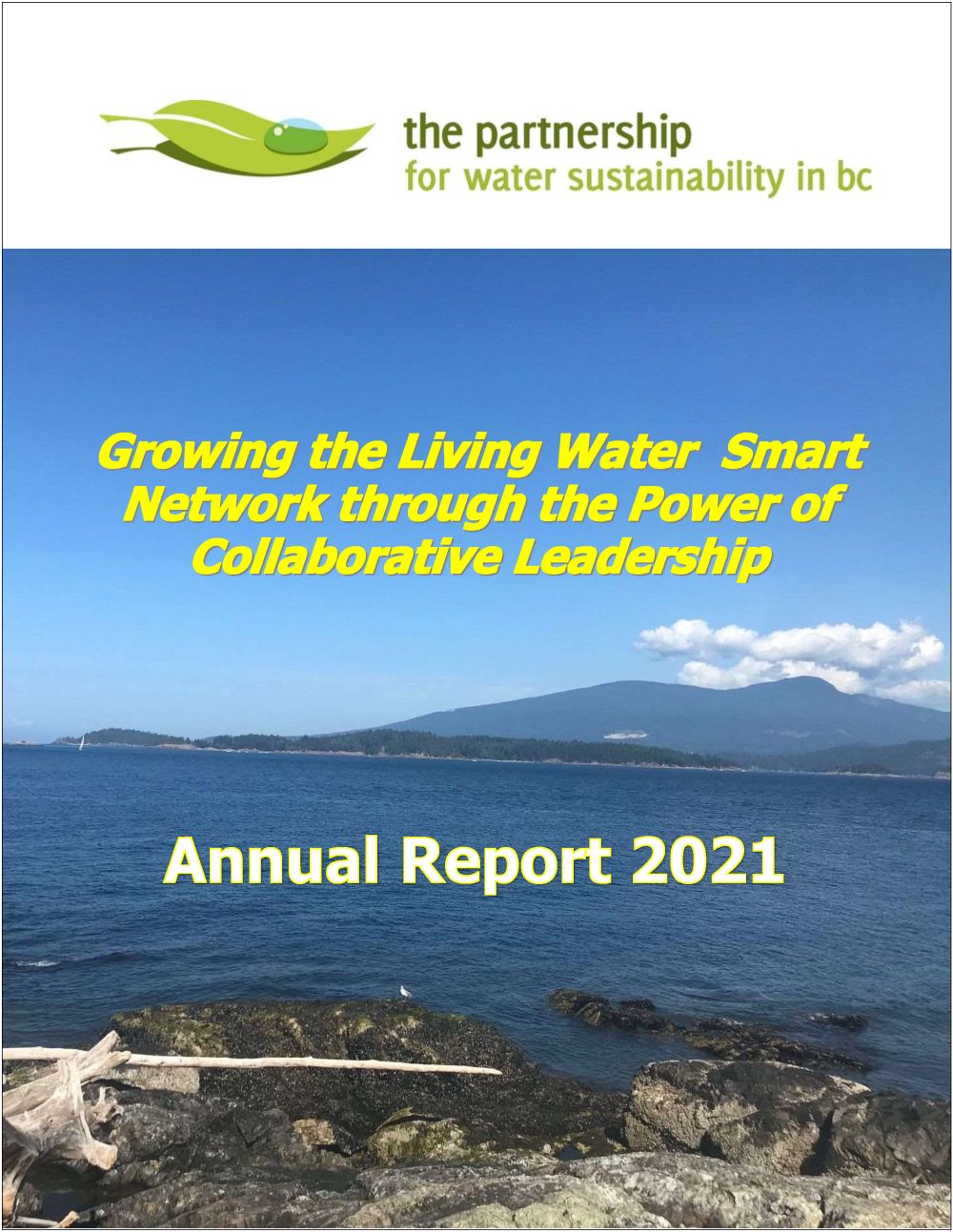Creating a Culture for Urban Watershed Restoration in British Columbia
NOTE TO READER:
“SHARE INFORMATION. INFORM DECISIONS.” This soundbite lines up nicely with the mission of Waterbucket eNews which is to help our readers make sense of a complicated world. Waterbucket eNews celebrates the leadership of individuals and organizations who are guided by the vision for Living Water Smart in British Columbia to build greener communities and adapt to a changing climate; and embrace “design with nature” approaches to reconnect people, land, fish, and water in altered landscapes.
The edition published on November 30 2021 featured historical resources readily accessible and downloadable from the waterbucket.ca website. These documents help focus attention on the importance of oral history as an effective way to pass on experience and understanding over time as the intergenerational baton is handed off.
Creating a culture for urban watershed restoration relies on knowing the oral history of an area. And as the First Nations who have settled these lands for 1000s of years tell us, passing on the oral history is key to sharing a collective memory through time. Each generation must be receptive so that experience is passed on.

30-Second Takeaway on “Creating a Culture”
For the past two decades, the Partnership for Water Sustainability has been building a library of resources on the waterbucket.ca website. Many of these resources have provided the curriculum backbone for the peer-based educational program delivered by the Partnership under the umbrella of the Water Sustainability Action Plan for British Columbia.
With the passage of time, however, knowledge of the existence and significance of historical resources is easily lost. This is one of the consequences of “generational amnesia”, the featured on November 9th 2021. Hence, the purpose of this edition of Waterbucket eNews is to draw reader attention to two of many invaluable resources on the waterbucket.ca website. These are easily found by going to the Publications and Downloads dropdown on the Convening for Action community-of-interest.
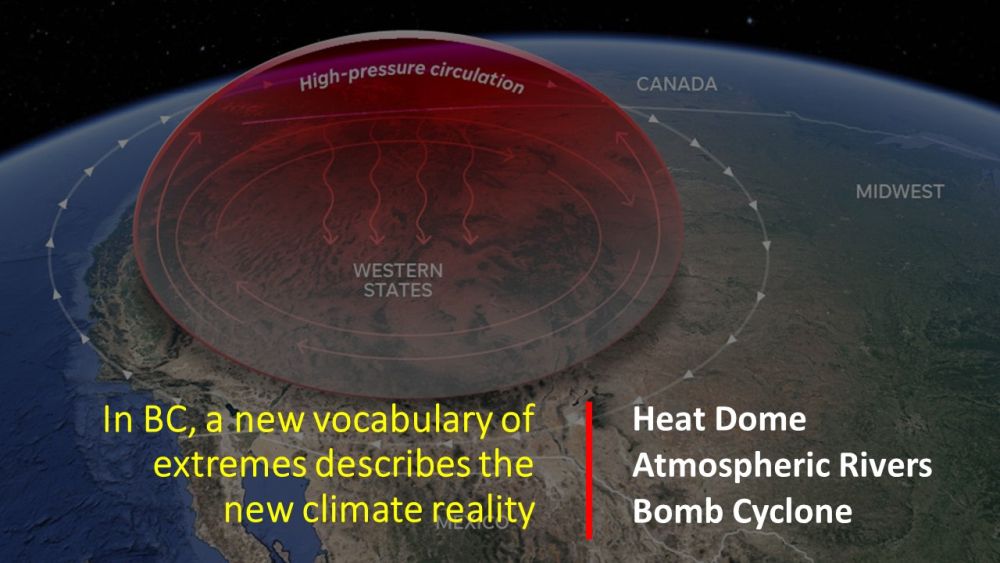
|
|
DOWNLOAD A COPY: https://waterbucket.ca/wcp/wp-content/uploads/sites/6/2021/11/PWSBC_Living-Water-Smart_Shared-Responsibility_2021.pdf
EDITOR’S PERSPECTIVE
“Changing the way communities conserve, use and develop land depends on establishing higher expectations and challenging decision-makers and practitioners to embrace shared responsibility. It takes time to change the culture, no matter what the setting,” stated Kim Stephens, Executive Director, Partnership for Water Sustainability in BC. He is the principal author of Beyond the Guidebook 2010: Implementing a New Culture for Urban Watershed Protection and Restoration in British Columbia.
“By 2010, as documented in Beyond the Guidebook 2010, it was evident that British Columbia was at a tipping point in the local government setting. There were strong reasons for optimism. Implementation of a new culture based on ‘designing with nature’ appeared to be within our collective grasp.”
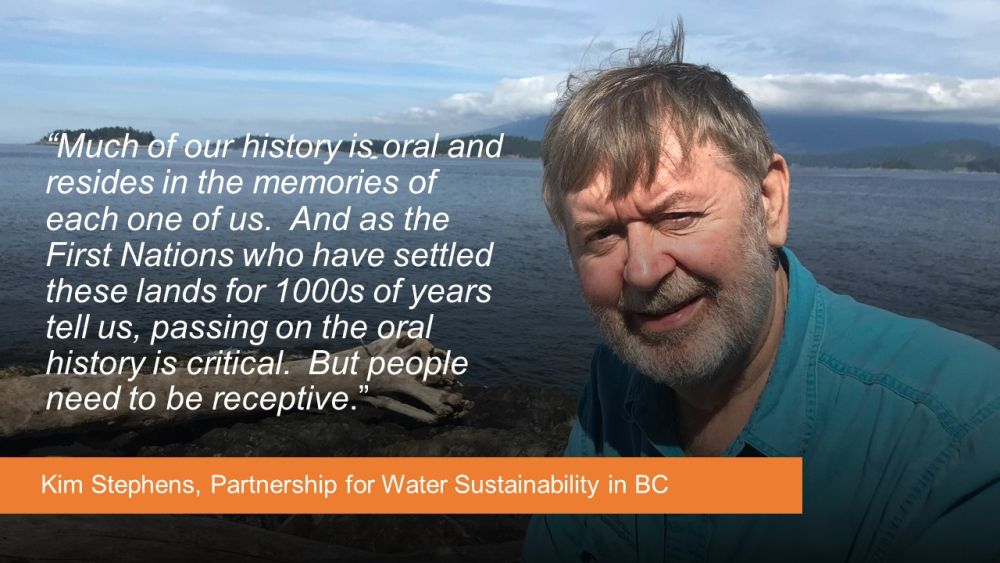
Generational Amnesia is a Growing Concern
“Fast-forward to 2021. Generational amnesia potentially puts at risk much of the good work that has been accomplished in the past two decades,” continued Kim Stephens.
“Knowing one’s history is important. By pulling threads of understanding from the past, the Partnership believes that passing on the ‘oral history’ would help everyone make informed decisions that result in better outcomes. The intergenerational benefits of knowing one’s oral history would ripple through time. In sharp contrast, there are risks and consequences associated with re-inventing the wheel because ‘they don’t know what they don’t know’.”
“In the 2000s, the call to action was a simple one: What do we want this place to look like in 50 years and beyond? Once a community collectively decides what kind of future it wants, the next step is to determine what tools would make it possible to bring the shared vison to fruition. That is when the hard work begins. It requires intergenerational commitment. This relies on an understanding of oral history in order to benefit from and build on experience.”

Settlement, Economy and Ecology in Balance
“In the mid-2000s, we observed that insertion of the word team in ‘regional approach’ had a profound impact on how practitioners viewed their world. We realized that this framing is a powerful motivator for aligning efforts at provincial, regional and local scales to achieve the objectives and targets in Living Water Smart, British Columbia’s Water Plan. Everyone needs to agree on expectations and how all the players will work together. After that, each community can reach its goals in its own way.”
“Everyone who is involved in the land planning and development process must understand ‘the goal’ in doing business differently. Otherwise, the status quo results in unacceptable consequences. This approach to peer-based education led to development of the Responsibility Matrix as a communication tool to focus all on the players in the local government setting on their individual roles and responsibilities in striving to achieve THE GOAL.”
“Settlement, economy and ecology in balance. This would be the desired outcome in aligning efforts through a team approach, agreeing on “the goal”, and doing business differently to create a desired future that answers the question: What do we want this place to look like in 50 years and beyond?”
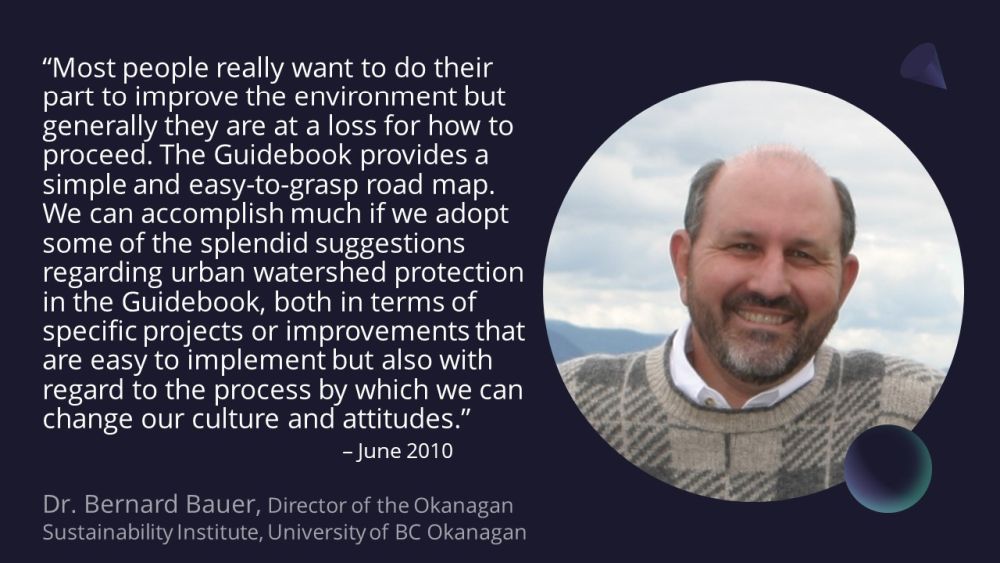

DOWNLOAD A COPY OF THE CIRCULAR:
https://waterbucket.ca/rm/files/2016/05/MCD_BeyondGuidebookCircular_online-version.pdf
Creating a Culture for Urban Watershed Restoration in BC:
Flashback to “Beyond the Guidebook 2010”
“In 2005, we said this would be a different kind of guidebook. We said that the Guidebook would be the ‘telling of the stories’ of how change is being implemented on-the-ground in BC. Before the chapters could be written, however, the regional case studies had to run their course,” stated Glen Brown in 2010. At the time, he was an Executive Director in the provincial government.
“Well, it is five years later, and Beyond the Guidebook 2010 is the story of how we got to here and where we are going next. This is the Water-Centric Guidebook. If one goes back 10 years, there was a void of policy and legislation. This led us down an educational path as the logical alternative. We took the Stormwater Planning Guidebook, which is a document released in 2002, and we moved it to implementation.”
“A good idea is immediate, but preparation for implementation can take 5 to 10 years. Change will then take place quickly, states the Guidebook in the chapter titled Building Consensus and Implementing Change. It has taken patience and consistent messaging over the past decade to incrementally build consensus, facilitate a culture change, and start implementing a new way of doing business.”
Ministry Circular on Context for Rainwater Management and Green Infrastructure in British Columbia:
On February 10, 2009 the Ministry of Community Development sent out a circular to all Municipal and Regional District Chief Administrative Officers, Engineers and Planners about Beyond the Guidebook as provincial initiative. The Circular explained how a number of provincial initiatives support and/or complement each other.
Rollout of Beyond the Guidebook 2010 commenced with a study session at the 2010 Annual Convention of the Union of BC Municipalities.
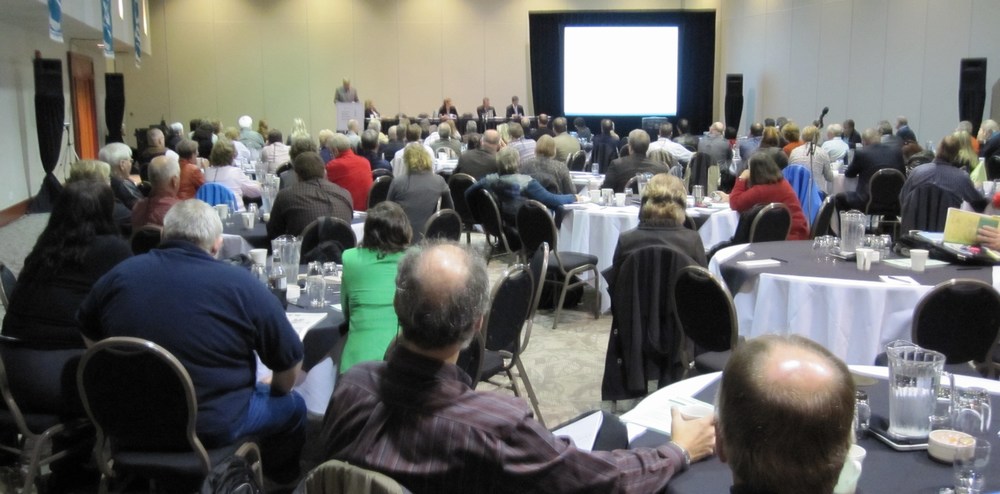
Rollout of “Beyond the Guidebook 2010” at the Annual UBCM Convention
The New Business As Usual
Chapter 1 is the ‘call to action’. The future desired by all will be created through alignment of federal, provincial, regional and local policies and actions.
Chapter 2 provides an overview of why Stormwater Planning: A Guidebook for British Columba was a catalyst for action to implement a ‘design with nature’ approach to rainwater management and green infrastructure.
Chapter 3 describes the steps in an incremental process for building practitioner capacity in BC to implement the New Business As Usual.
Chapter 4 introduces the stories of three regional initiatives; they demonstrate that the practitioner culture is changing as an outcome of collaboration, partnerships and alignment.
Chapter 5 describes the inter-connected elements of an Outreach & Continuing Education Program for advancing a ‘water-centric’ approach to community development.
Chapter 6 describes six outcomes resulting from local governments embracing a ‘top down bottom up’ strategy to implementing the New Business As Usual.
Chapter 7 provides local governments with ‘how to’ guidance for developing outcome-oriented urban watershed plans, with emphasis on a necessary course correction for Integrated Stormwater Management Plans (ISMPs).
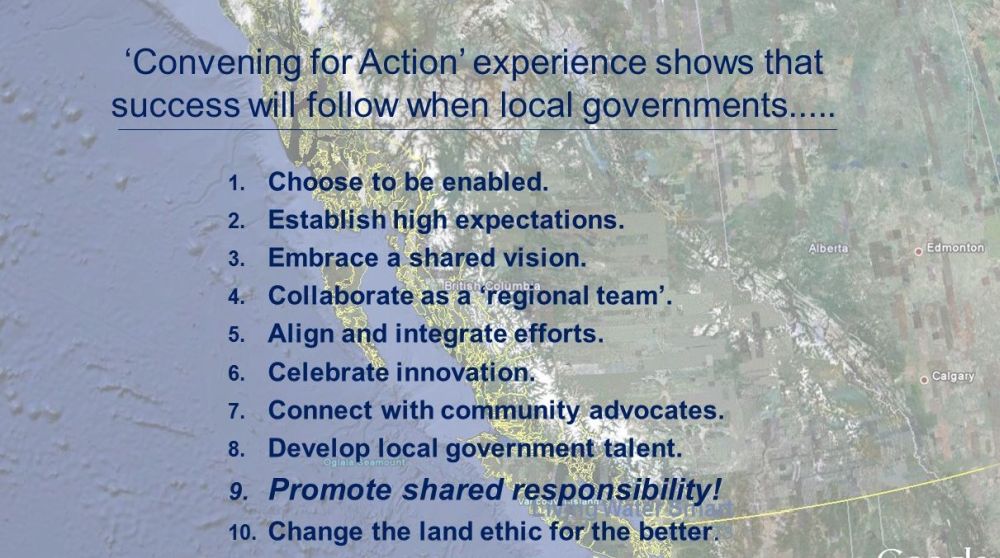
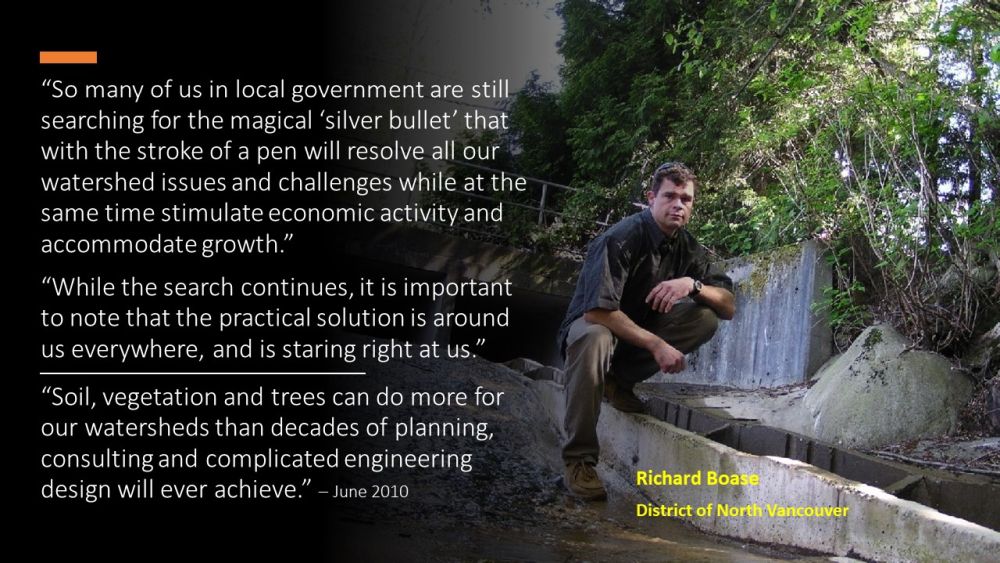
TO LEARN MORE: https://waterbucket.ca/rm/2018/04/06/flashback-to-2010-a-crucially-important-message-in-beyond-the-guidebook-2010-is-that-we-now-have-the-tools-and-experience-to-design-with-nature-said-richard-boase/
About the Partnership for Water Sustainability in BC
Technical knowledge alone is not enough to resolve water challenges facing BC. Making things happen in the real world requires an appreciation and understanding of human behaviour, combined with a knowledge of how decisions are made. It takes a career to figure this out.
The Partnership has a primary goal, to build bridges of understanding and pass the baton from the past to the present and future. To achieve the goal, the Partnership is growing a network in the local government setting. This network embraces collaborative leadership and inter-generational collaboration.
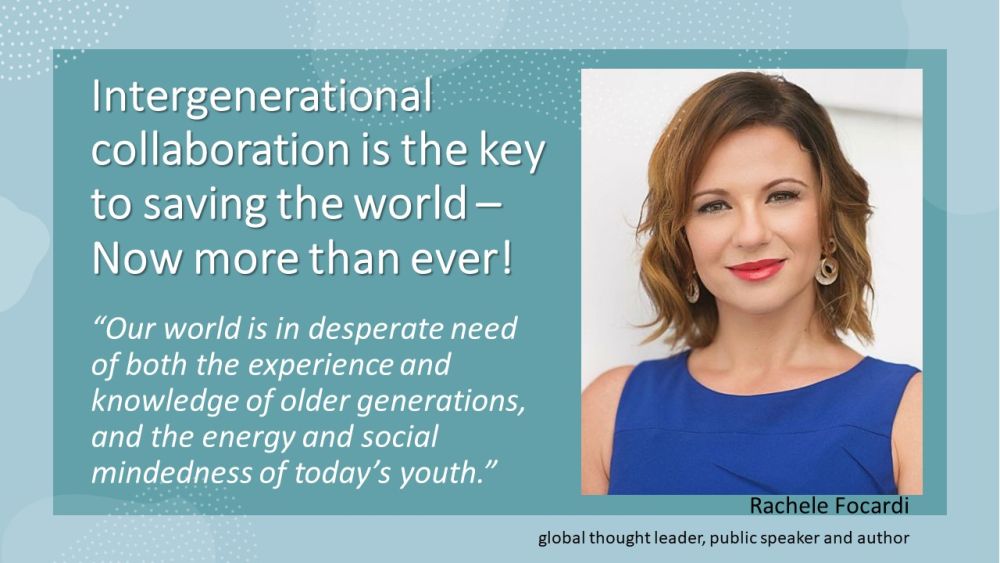
TO LEARN MORE, VISIT: https://waterbucket.ca/about-us/
DOWNLOAD: https://waterbucket.ca/atp/wp-content/uploads/sites/9/2021/11/PWSBC_Annual-Report-2021_version-for-waterbucket.ca_.pdf




